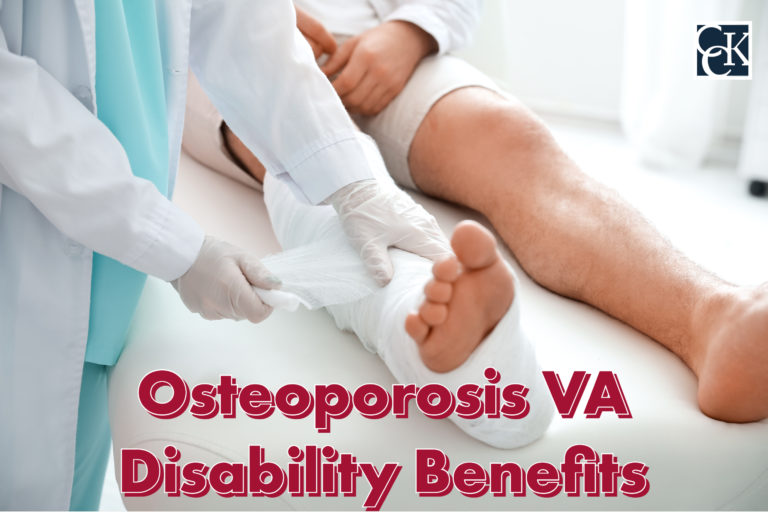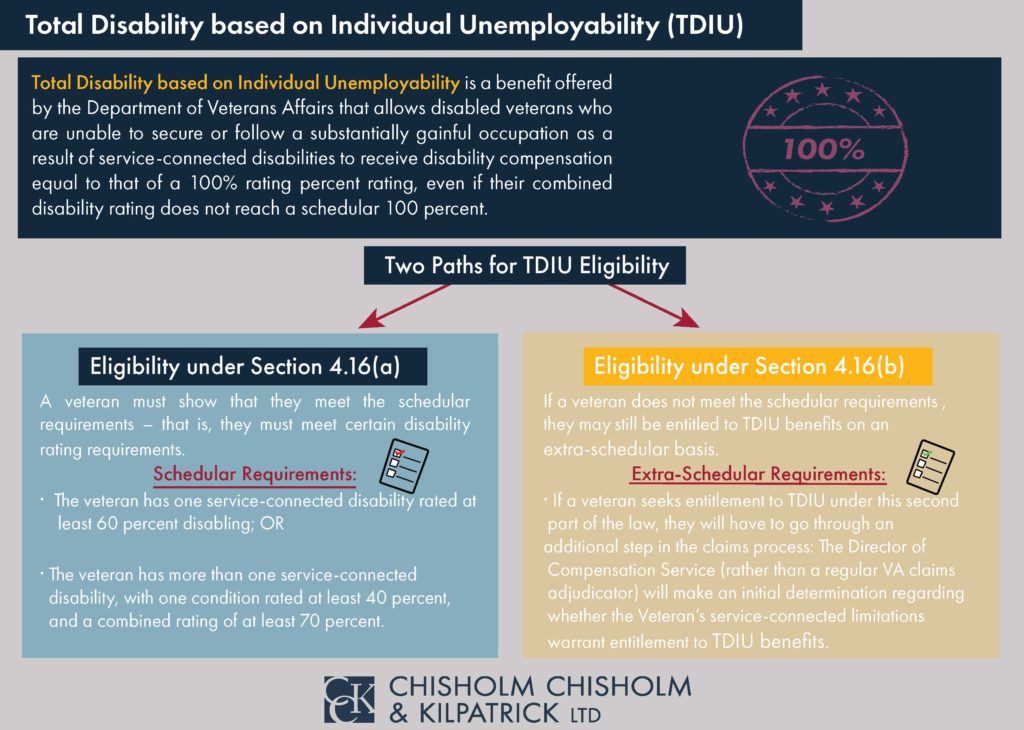Osteoporosis VA Disability Benefits

CCK Law: Our Vital Role in Veterans Law
If you are a veteran with osteoporosis, you may be entitled to compensation from VA. Continue reading to learn more information about VA disability benefits for this bone condition.
What is Osteoporosis?
Osteoporosis is a bone condition that causes a person’s bones to become thinner and weaker over time, making them more likely to break. With osteoporosis, the regeneration of new cells cannot keep up with the decay of old cells. The lack of new cells to replace old cells leads to the thinning of the bones.
People with the condition can break a bone incredibly easily, such as when they cough. Any sort of fall, even minor ones, can also result in bone fractures. Commonly, these fractures occur in the hips, spine, or wrists. Wrists can fracture easily as people use them to brace themselves for a fall.
Sometimes, osteoporosis is called a “silent disease,” because many people do not know they have it until they actually break a bone.
Symptoms of Osteoporosis
- Severe back pain
- Loss of height
- Spine malformations
- Bones broken extremely easily through normal stresses
People with osteoporosis can break bones while bending, lifting, coughing, or falling.
What Causes Osteoporosis?
As mentioned above, osteoporosis is caused when cell death occurs more quickly than cell regrowth. Naturally, bone cells die off and are replaced with new bone, which typically happens every seven to ten years for adults. This is usually called remodeling. There are typically two types of remodeling:
- Balanced Bone Remodeling—This type of remodeling happens before age 30. Bone remodeling of this type is usually done around puberty and early adulthood, in a time where most people are growing. During balanced bone remodeling, new bone is produced at the same rate old bone is removed, making it balanced.
- Unbalanced Bone Remodeling—Unbalanced bone remodeling occurs mostly in people above the age of 30. When bone removal outpaces bone growth, osteoporosis occurs.
As described above, one of the main causes of osteoporosis is aging. Hormonal changes or having a genetic predisposition can also make a person more likely to develop osteoporosis.
Additionally, a person can be at risk if they take certain medication or if they have certain health conditions, such as:
- Gastrointestinal/Digestive Disorders
- Prostate or breast cancer
- Autoimmune disorders
- Kidney or liver disease
- Neurological disorders
- Hematologic disorders
- Endocrine disorders
Some surgical procedures, like an organ transplantation, gastrointestinal bypass, gastrectomy, bypass, or gastrectomy, and poor nutrition can also contribute to the development of this condition.
How Does Osteoporosis Relate to Military Service?
As mentioned above, certain conditions can be linked to osteoporosis. If a veteran has a condition, caused by their military service, which causes them to develop osteoporosis, they can receive VA disability benefits for their osteoporosis.
For example, if a veteran was exposed to Agent Orange during their military service and then developed prostate cancer, they can receive benefits for their prostate cancer. If, because of their prostate cancer, they later develop osteoporosis, they can also receive benefits for the condition.
Many of the conditions linked to osteoporosis are very common for veterans, meaning that many veterans develop osteoporosis because of their military service. Female veterans are generally at a higher risk than male veterans.
How to Establish Service Connection for Osteoporosis
To establish service connection for osteoporosis, veterans will need to submit VA Form 21-526EZ to VA. The form can be submitted online using VA’s eBenefits platform, by mail, in person through a Regional Office, or with a legal representative.
With the form, the veteran will need to submit three things:
- A current diagnosis;
- An in-service event or stressor which caused or aggravated the condition; and,
- A nexus, which links the veteran’s osteoporosis to their service
Secondary Service Connection for Osteoporosis
Osteoporosis may be secondary service connected to another condition, as described above. If this is the case, the veteran will need to submit:
- A current diagnosis of osteoporosis, as secondary to a primary condition; AND
- Medical evidence showing the relationship between the primary condition and osteoporosis
It may also be the primary condition, in which case the same evidence would need to be provided, just proving how the secondary condition is related to osteoporosis. For example, a veteran may receive benefits for a bone fracture as secondary to osteoporosis.
Importantly, veterans filing for secondary service connection can use the exact same form and submission method as when filing for primary service connection.

VA Compensation & Pension Exams
After filing a claim for benefits, VA will likely schedule you for a Compensation and Pension exam. Compensation & Pension exams are designed to gather evidence as to whether your condition was caused by your military service and to assign a disability rating if service connection is granted.
The exam will likely be performed by either a VA examiner or a VA-contracted examiner. During this exam, the examiner could take X-rays to analyze your condition, or ask you questions about your condition and your military service.
It is important to attend an exam if you are scheduled for one. If you do not attend, VA could deny your claim. If you have a conflict with an already scheduled exam, or if you find out you missed an exam, you should contact VA as soon as possible to reschedule.
How Does VA Rate Osteoporosis?
For many conditions, VA will use analogous rating criteria if a specific rating code does not exist. Osteoporosis is one of those conditions. This means that, instead of having its own diagnostic code, it is often rated under the diagnostic code used for degenerative arthritis (5003).
If your osteoporosis creates incapacitating episodes, you may be eligible for one of the below ratings:
- 20%–This rating is given to veterans who, with X-ray evidence, experience osteoarthritis in 2 or more major joints or 2 or more minor joint groups, with occasional incapacitating exacerbations
- 10%–The 10 percent rating is given to veterans who, with X-ray evidence, have osteoporosis in 2 or more major joints or 2 or more minor joint groups
Presumptive Service Connection
In some instances, veterans may be eligible for presumptive service connection for their osteoporosis. Some examples include former Prisoners of War, Vietnam Veterans who were exposed to Agent Orange, Atomic Veterans who were exposed to Ionizing Radiation, and Gulf War Veterans who experience Gulf War Illness.
The Veterans Improvement Act of 2008 established a presumption of service connection for osteoporosis for veterans who veterans who were Prisoners of War (POWs) and have been diagnosed with PTSD. Importantly, in order to be eligible for this presumption, the osteoporosis must be rated as at least 10 percent disabling.
TDIU Benefits for Osteoporosis
If your osteoporosis prevents you from obtaining and maintaining substantially gainful employment, you may be eligible for a total disability based on individual unemployability (TDIU)
TDIU is a monthly VA benefit that compensates veterans at the 100 percent level if they are prevented from working because of their condition(s).
In order to be eligible for Schedular TDIU, veterans must have one condition rated at 60 percent minimum OR two conditions that can be combined to reach 70 percent, where one condition has a minimum rating of 40 percent. As such, secondary service connection can be extremely helpful in boosting veterans to the 70 percent minimum needed for multiple conditions to achieve TDIU. The criteria for schedular TDIU is outlined under 38 CFR § 4.16a.
If they do not meet these requirements, veterans may still qualify for TDIU on an extraschedular basis.

Need Help Fighting for Your Benefits?
If you have been denied VA benefits for your bone condition, we may be able to help. The experienced veterans’ advocates at Chisholm Chisholm & Kilpatrick can build a strong case based on the evidence and craft a persuasive appeal to fight for your benefits. Call us today for a free case evaluation to see if we can assist.
About the Author
Share this Post
